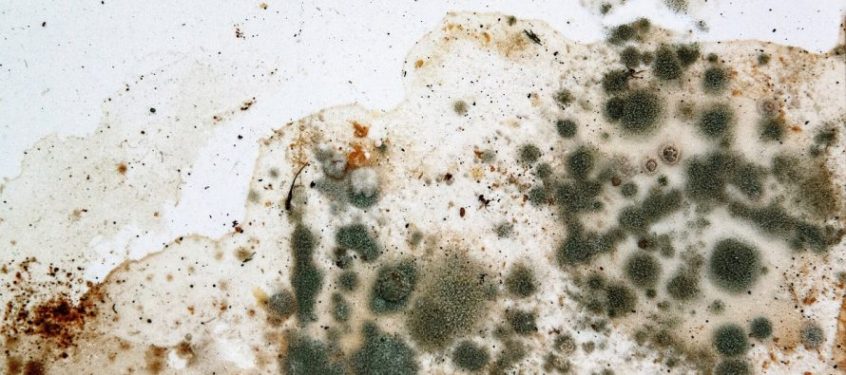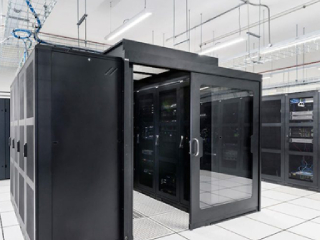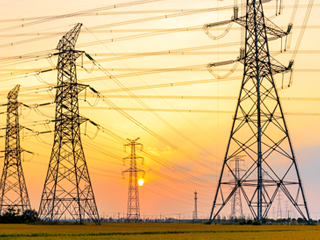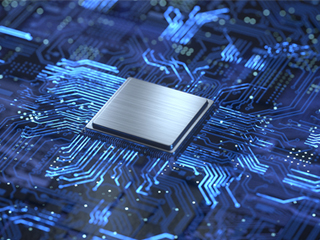Mold can sneak into the data centers rapidly. No doubt that it causes distress for data center managers. Mold only takes 24-48 hours to develop after exposure to moisture. Incorrect temperature and humidity make a suitable habitat for mold. This problem can be more threatening when seasonal weather introduces humidity and moisture to the equation. With such neglect, your facility and equipment will be in danger. Thus, Temperature and humidity monitoring should be a critical practice for data center managers. This will help you control all the damages and losses associated with mold growth.
Companies consider their data centers to be the heart of their business operation. With the amount of data stored here, it is their major intent to protect it from any potential threat. However, the inertia of day-to-day operation and assiduity in protecting their software from viruses, makes them neglect their unseen enemy. Little did they know, an organism beyond our naked eyes can see, can prompt their data center’s full operation.
What Causes Mold?
Molds are micro-organisms that live on almost every surface. They usually grow in humid areas without adequate airflow to dry up the moisture. It can be behind the walls, glasses, ceiling, or even on equipment such as circuit boards. Together with yeast and mildew, mold is classified as a fungus. They typically consist of a network of threadlike filaments that infiltrate the surface on which it grows. Molds may appear black, green, gray, brown, or other discoloration of the affected surface.
The role of the mold is to break down organic dead matter and return the nutrients to the environment. They require food to grow which is anything organic. For instance, a mold grows on your data centers glass wall not because it eats the glass. The reason is the dirt on it that a mold can eat. Molds can also reproduce through microscopic spores. They are usually found outdoors but brought inside by sticking to our shoes and clothes. Additionally, a lot of them are very small that can be carried in even with the gentle air. The number of mold spores may vary on season-to-season and day-to-day. Lastly, humidity and temperature are the key environmental parameters that introduce the growth of mold in the data center. When the relative humidity and temperature threshold are not maintained, molds can grow within your facility causing damage and loss.
The Impact of Mold Growth on Data Centers

Photo Credit: info.uwe.ac.uk
The impact of Molds is mostly associated with human health. Headaches, skin rashes, and asthma are usually the effects of molds. For critical missioners –facilities such as data centers, though its effects are less commonly known, they are undeniably terrible.
Molds can cause structural damage to the physical facility. As mold thrives at any organic material, any part of the facility structure is prone to mold damage. Be it concrete cement, wood, or glass. When mold growth is tolerated, mold weakens the structure causing the walls, floors, and ceiling to collapse. In the event of any collapsing, the data center operation will be interrupted and repair costs will increase.
Molds can grow on the equipment for as long as there is a favorable condition. It often occurs when the moisture stays long before getting dried. After absorbing moisture from the air, plastic insulation such as printed circuit boards can change in electrical properties and can be degraded. Mold on circuit board can also cause lead to short circuits. Additionally, most electronic equipment has its fans inside use for cooling. As the fans exhaust in the air, they also suck dust particles. The combination of dust particles with moisture will be great nourishment upon which the hungry mold spores feast. If not cured early enough, the accumulation of mold will damage the equipment. And needless to say, equipment damage leads to interrupted business operations.
The Importance of Temperature and Humidity Monitoring
Cleaning your data center to keep free from dust and dirt is a sure way in preventing mold growth. However, doing it alone is not enough. Monitoring environmental factors such as temperature and humidity are also vital in achieving a mold-free data center.
-
Temperature Monitoring
Maintaining the balance between hot and cold air has always been the foremost foundation of data center uptime. Temperature monitoring is mostly associated with protecting equipment from overheating. Data centers comply with ASHRAE Standard to ensure that every device has sufficient cooling. Yet, these are not the only risks of temperature. Molds can also devastate your facility and equipment if the temperature is not regulated. In general, mold grows well in warm temperatures ranging from 60 to 80 degrees Celsius. When cold surfaces are exposed to hot and moist air, condensation occurs. This is because the cooler air is incapable of holding as much moisture. This condensation provides the perfect condition for mold to develop and grow.
For instance, larger HVAC units can also lead to a condition that is ideal for mold growth. Units that are relatively larger for the room size are installed as they believe “the bigger, the better”. This can have a counter effect called the short cycling condition. This condition happens when an air-conditioner runs, then turns off again. The air holds up the moisture which promotes molds.
Monitoring the consistency of the temperature creates an impact on mold prevention. By avoiding the “hot then cold air” cycle, the data center would not be a place that can host life for molds.
-
Humidity Monitoring

Photo credit: dc.mynetworkinsights.com
Humidity is complimentary of temperature. If temperature changes, so do the humidity. Moisture is the easiest requirement for mold growth. Moisture can form with two types of moisture: 1) water leakage from pipes and air conditioning unit and 2). Humidity in the air. Of these two, the humidity is more concerning. Mold growth caused by water leaks can be anticipated by determining the potential locations of the water leak. Whereas moisture caused by humidity in the air is always a puzzle for data center managers.
Data centers maintain a Relative Humidity of 20-55% for optimal performance and reliability. Same for mold prevention, the Relative Humidity should be below 70%. If the humidity goes beyond this threshold, then your data center is at risk. Wet, humid summer air also affects the relative humidity of the facility. Along with this factor is the rainfall. Mold spores attach themselves to damp surfaces. When it rains or even when the air is particularly humid, surfaces outside the home can become damp, allowing for mold spores to latch on and grow.
It is impossible to control mold with the temperature alone. Humidity monitoring is also critical for monitoring. Datacenter managers need to ensure that the humidity of the facility does not get high enough to encourage mold growth.
Temperature and Humidity Sensors in Mold Prevention
Mold grows faster than you can imagine. So the key to saving data centers from mold damages is prevention. Using temperature and humidity monitoring sensors is an advantage. It helps regulate the temperature and humidity of the data center more efficiently. It works by monitoring the physical environment over a specific period then convert it into electronic data to record.
Sensors send operators alerts when these factors reach the threshold. So it stops the mold before it can even form on any part of the facility. It helps ensure that the environment does not contain the combination of conditions that will promote mold growth. However, it is important to note that sensors should be placed on strategic locations inside the facility to achieve superior accuracy.
AKCP Wireless Sensor
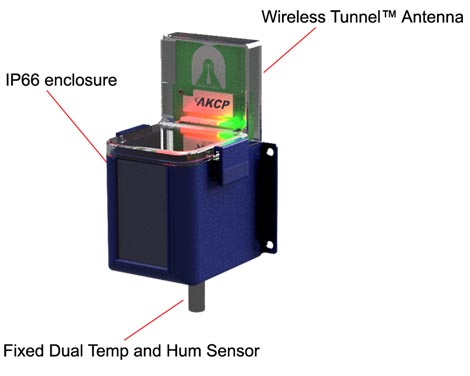
Wireless Temperature and Humidity
AKCP Wireless Temperature and Humidity sensor ensures that environmental conditions are within required parameters. It logs and provides a graph of data over time, and receives real-time alerts when user-defined sensor thresholds are exceeded. Use as a data logger with data buffered and synchronized to the gateway when in range.
For data centers, safety and sustainability are critical. Investing in the safety of the data center should be part of the development strategy. It will help protect costly equipment and facility to sustain the business in the long run. With AKCP Wireless Temperature and Humidity Sensor, the data center are mold-free, and a well-performing data center.
Wireless Temperature and Humidity Monitoring
Ensure that your environmental conditions are within required parameters, log, and graph data over time, and receive real-time alerts when user-defined sensor thresholds are exceeded. Use as a data logger with data buffered and synchronized to the gateway when in range. IP66 rated enclosure provides weatherproofing for use in outdoor environments. Mounting with DIN rail, wall hang, or cable-tie / pipe clamp. Pair with any AKCP Wireless Tunnel™ gateway.
Sensor Options
- 4x AA Battery powered, with 10-year life*
- 4x AA Batteries with 10 years guaranteed battery life*
- 5VDC or 12VDC powered
- IP66 rated waterproof enclosure
- LED indicators for power, status, and RSSI
- Optional DIN rail or pipe mounting accessories
- Optional cable up to 15ft for sensor placement
Reference Links:
https://energyresearch.ucf.edu/consumer/buildings/building-science-basics/mold-growth/
https://buythermopro.com/guides/temperature-and-humidity-to-kill-mold/
https://avtech.com/articles/4957/updated-look-recommended-data-center-temperature-humidity/
https://www.acurite.com/blog/monitoring-temperature-and-humidity-to-control-mold.html
https://books.google.com.ph/books?id=zhX_5hccFWMC&pg=PA66&lpg=PA66&dq=what+will+happen+if+mold+grow+on+circuit+board&source=bl&ots=yBhhrrfYqF&sig=ACfU3U3Hbx2oqclsu_84Wommxp4Olin9CQ&hl=en&sa=X&ved=2ahUKEwidt9DPlIfwAhWCHKYKHdroASEQ6AEwEXoECBEQAw#v=onepage&q=what%20will%20happen%20if%20mold%20grow%20on%20circuit%20board&f=false
https://restorationmasterfinder.com/restoration/cleaning-mold-from-electronics/

